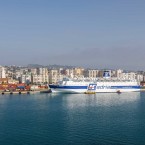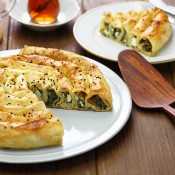Information about Durres
Durres is the second largest city in Albania by number of inhabitants and is among the oldest cities in the country. Founded by Greek colonists, it was also an important Roman, Byzantine, Venetian and Ottoman settlement. Overlooking the Adriatic Sea, it is a popular holiday destination. Its long beaches, the historic center with beautiful buildings and archaeological sites make this city a perfect destination for the summer. Durres is also the main port of Albania, as well as one of the most important on the Adriatic. Ferries dock there all year round. During the winter it is used above all for the transport of goods, while in the summer the ferries that transport vacationers to Albania increase exponentially, especially those who prefer to travel with their own car. Adria Ferries ferries depart from Italy from the ports of Bari and Ancona.
Tourist and seaside offer
The beaches of the city are very popular tourist destinations, both by Albanians and by foreign visitors who increasingly arrive on this coast. Many Tirana residents choose to spend their holidays in Durres. The beaches are equipped and are perfect for a holiday with children. The Durres waterfront has now turned into an inhabited neighborhood because in recent years numerous buildings have been built and people live there even during the winter. Before the 1990s, the entire beach was divided into six sectors: Agip, Teuta, Apollonia, Ferrovia, Iliria and Iplepa. Today it is impossible to notice where one ends and where the other begins.
What to do in Durres
The Roman Amphitheater of Durres is located in the historic center and is still clearly visible, hidden among the houses. Over the centuries, many palaces have been built right above the ancient Roman walls, so much so that much of it is still underground. It was built in the second century under the reign of Traiano. It could seat up to 25,000 people, making it the largest amphitheater in the Balkans. Since 2004 it has been part of a project to enhance the historic center of the city through the creation of the Urban Archaeological Park of Durres, in which the University of Parma and our Ministry of Foreign Affairs are involved. The Great Mosque of Durres which is located in the historic center was built in 1931 on a previous Ottoman mosque. A stone's throw from the port of Durres stand out the ancient walls of the Byzantine Castle that surrounded the city and the 15th century Tower, a period in which Durres was occupied by the Venetians. The Middle Ages was considered one of the most powerful fortresses on the Adriatic. The thickness of the tower's wall was exploited for the construction of the internal stairs leading to the panoramic terrace. Since Durres contains many centuries of history, the Archaeological Museum was opened in 1951, located along the main street, completely redone in 2010 in a very modern building and reopened by Prime Minister Edi Rama only in 2015, after four years of closure. The main street in the historic city center is the 'boulevard'. The buildings on both sides date back to the period of the Fascist occupation. There are beautiful Art Nouveau buildings in pastel colors that now house hotels or municipal offices. There are also buildings from the Socialist period, with the ground floors transformed into clothing, fashion and accessories shops or into clubs, restaurants and ice cream parlors. On summer evenings it is the busiest street in Durres. Piazza Taulantia, in front of the Venetian Tower, is the beginning of a course that was previously a garden with archaeological finds and which, now, has been transformed into an avenue lined with palm trees on both sides, recent constructions and palaces that at the on the ground floor they have shops, bars and restaurants as usual.
What to eat in Durres
In Albania, history and culinary tradition mix. The colonization by the Ottoman Empire, which took place in 1570, has strongly influenced today's Albanian food, culture and traditions. Italy also played a fundamental role, bringing pasta and rice to Albanian food. Furthermore, the geographical position and especially the proximity to Greece should not be overlooked. The most common foods are those of the Mediterranean tradition, from legumes to vegetables, fish and meat. Burek is the best known, loved and most consumed dish in the Balkan region. A thin, crunchy phyllo pastry wraps a soft filling of cheese, or spinach, or meat, or pumpkin and onion. Whichever version you try, at any time of day, it will be great. The qofte are the classic meatballs. As in the whole area, they are characterized by the important use of more or less spicy spices such as cumin or paprika and mint, to give a touch of freshness. The dough is based on meat, which can alternatively be beef, sheep or pork and also includes a vegetarian variant based on potatoes, onions, peppers and eggs. Once grilled, they are served with plenty of raw onion and often accompanied by white rice or pita.
They are very easy to find, just follow the scent of the grill on the street. The speça me gjize is a colorful dish, tasty and valid for the hottest evenings or for a hurry lunch, it is a great classic of home cooking due to its simplicity. They are in fact yellow or red or green peppers stuffed with rice, cheese and spices and baked in the oven, served with plenty of oil and a whole basket of bread. Dozens of them are cooked for family lunches.




















